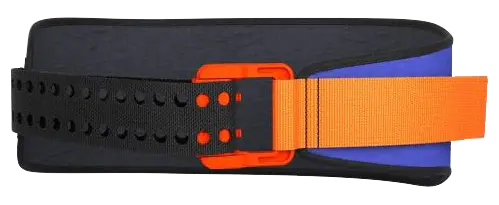Introduction
The pelvic binder is a simple, compact, and potentially life-saving stabilization tool in cases of unstable pelvic fractures. Previously limited to hospital settings or advanced medical teams, its use is now recognized as a critical early intervention-particularly in remote environments. As was the case with the tourniquet, it's time to update our approach: making pelvic binders more accessible-yes, but with the right training, clear indications, and sound clinical judgement. 
1. A Regulatory Framework Still Too Restrictive
In Quebec, paramedics are not currently authorized to apply a pelvic binder, let alone non-medical responders. While this cautious stance stems from safety concerns, it hinders the evolution of field practice. Elsewhere in Canada, some provinces have already integrated this skill into the scope of trained paramedics under medical oversight. On the ground, organizations such as the Canadian Ski Patrol have included this intervention in their quality management plans, although its use remains subject to local regulations.
2. 2. The urgent Need for Early Intervention
Guidelines from ATLS and the CoTCCC are clear: a pelvic binder is most effective within the first few minutes following trauma. It reduces pelvic volume, limits internal hemorrhage, and buys time while waiting for evacuation or surgical intervention. In remote settings, delaying binder application until imaging or physician arrival often results in critical time lost. A properly applied binder does not worsen the patient's condition-while an improperly placed one can.
3. Understand - Recognize - Act
Using a pelvic binder isn't about blindly following a protocol. It's about understanding its purpose, recognizing when it's indicated, and acting appropriately within your scope of training.
Understand :
- Reduce the expanded pelvic volume caused by an unstable fracture
- Limit potentially massive hemorrhage (up to several litres)
- Stabilize bone fragments and reduce pain
- Buy time before surgical intervention or embolization
 Recognize:
Recognize:
all tied to high-energy trauma mechanisms
- Fall from height >3 m, high-speed collision, crush injuries, explosion
- Significant pelvic pain with light palpation - avoid deep palpation as it may worsen instability
- Perineal, scrotal, or vaginal hematoma, or urethral bleeding
- Signs of unexplained shock following high-velocity trauma (low BP, tachycardia, cold/clammy skin)
Act:
- Centre the binder over the greater trochanters - never around the waist
- Slide the binder under the patient with minimal movement
- Tighten firmly until pelvic stabilization is achieved - do not loosen
- Bind the legs together to prevent rotational movement
Know When Not to Apply: There are situations where using a pelvic binder is not appropriate, even if the urge is strong to use it "just in case." For example:
- Suspected hip fracture presentation (external rotation, limb shortening) Trauma without a high-energy mechanism or pelvic pain
- Trauma without high-energy mechanisms or pelvic pain
- A ground-level fall in a stable older adult with isolated pain at the pubic symphysis
In these cases, the binder won't improve stability or comfort, and may obscure important signs or delay transport unnecessarily.
4. Training to Delegate with Confidence
As with the tourniquet, we must expand the use of pelvic binders to trained frontline responders. This demands a serious commitment to education: realistic simulations, supervised practice, clinical reasoning, and understanding the broader context. Competency does not come from a diploma-it comes through hands-on training, mentorship, and repetition. Only then can responders be trusted to act appropriately and decisively in the field.
Conclusion
The pelvic binder is a straightforward yet powerful lifesaving tool. In the context of major trauma, it represents an essential primary intervention when indicated - by stabilizing an unstable pelvis, limiting hemorrhage, and helping the patient survive long enough to reach definitive care.
Even when ultimately not required, a correctly placed binder based on valid clinical indications rarely causes harm-aside from a slight delay in preparing for transport. The real danger lies in incorrect placement-too high, ineffective, or even harmful-or worse, in failing to apply it when clearly indicated. In such cases, the consequences can be severe... or fatal.
Not in a hospital, but in the field. Where every minute counts.
...

